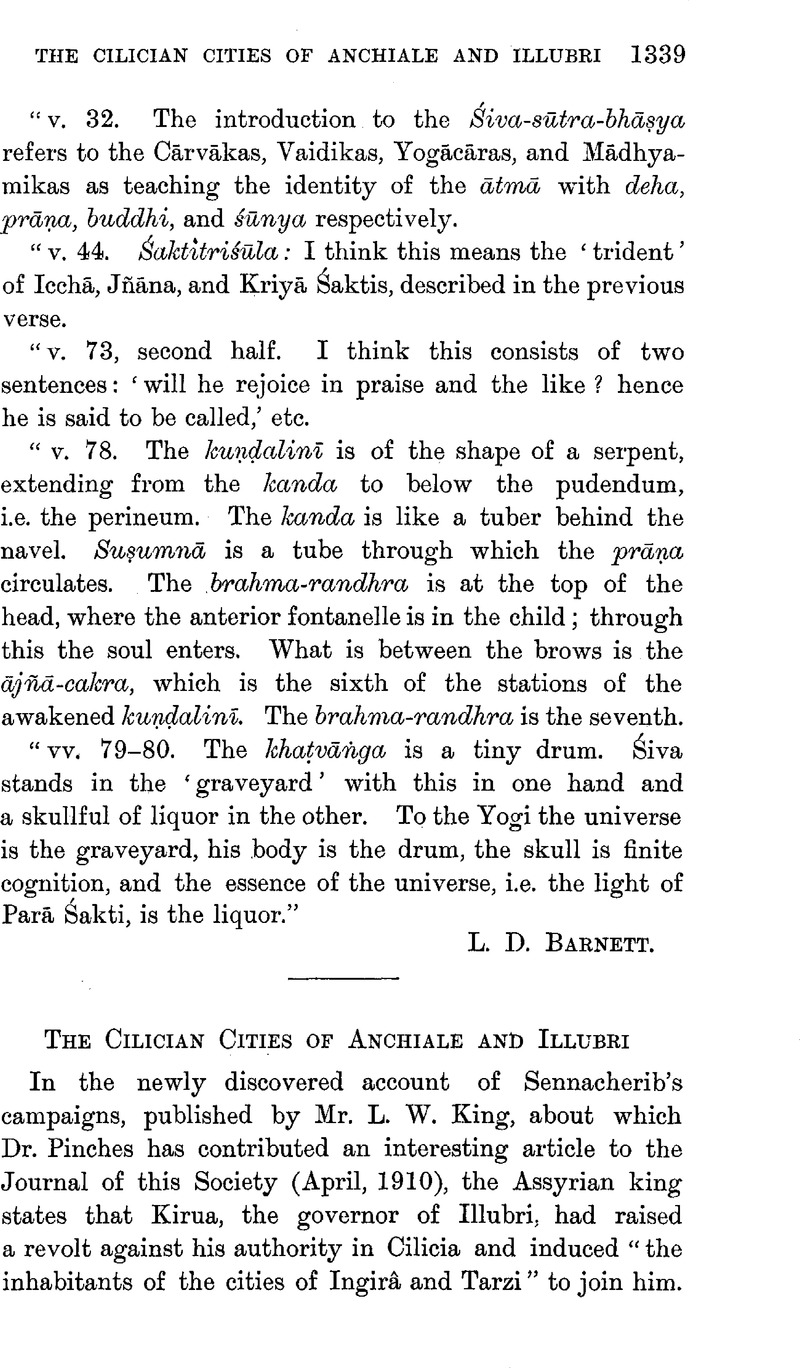Published online by Cambridge University Press: 15 March 2011

page 1341 note 1 Arrian, however, says that the hands were pressed together (Exped. Alex., ii, 5, p. 91).
page 1341 note 2 In the time of Shalmaneser II, however, Tarzi formed part of the domains of Katê, king of Quê (Black Obelisk, 132–40). Kirrî, the brother of Katê, seems to have the same name as Kirua, king of Illubri. To the east of Tarzi, according to Shalmaneser, were the towns of Lamena or Lawena and Tanakun. The name of Tanakun is evidently connected with that of Thanake, the wife of Sandakos who came from Syria to Cilicia and there founded the city of Kelenderis (Apollod. iii, 14, 3, 1). She was the mother of Kinyras and daughter of King Megessaros. Quê is written Qauê by Shalmaneser; hence we may connect the name with that of Ikonion which appears as Kαoα;ια (i.e. Kau-van-ya) in a Phrygian inscription discovered by Sir W. M. Ramsay in the Castle-mound at Konia. Professor W. Max Müller has pointed out that the name of the Quê survived in that of the fortress Kyinda described by Strabo as being “above Anchialê”.
page 1343 note 1 The Periplus Maritimus places Ionia at the mouth of the Pyramus.